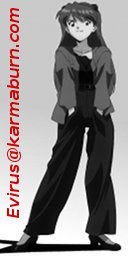|
|
Blog Archives:
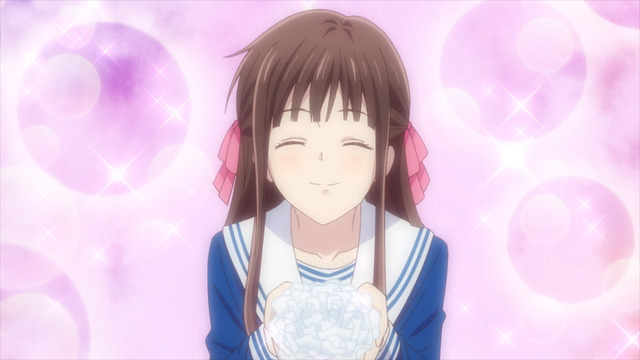
This is how everyone sees Honda Tohru and yet people
still manage to be assholes to her.
It's sort of difficult to talk about Fruits Basket: The Final because it's a 13-episode conclusion in a 63-episode adaptation of a well-regarded 23-volume manga. It's also a do-over succeeding a 26-episode series from 20 years ago which was also really good even though the source material hadn't ended yet. So, there's a lot going on.
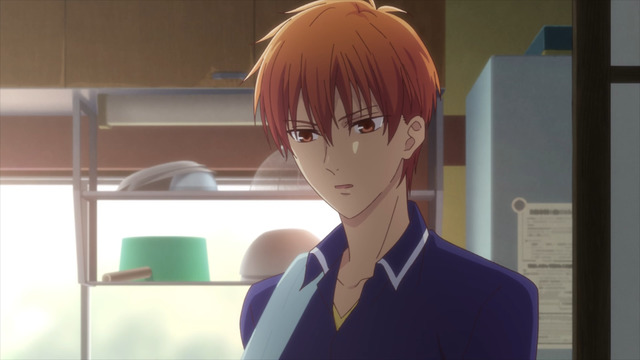
Is cat.
I do wish I had paid closer attention when I started watching this iteration of Fruits Basket when it began in 2019. There are a lot of characters, and there is a lot of setup, and I'm certain I missed a lot of subtleties early on. I suppose that is an argument in favor of re-watching the series, even if it is 63 episodes long, but that isn't going to happen until I've finally gotten around to reading the source material. It's gonna be a while.
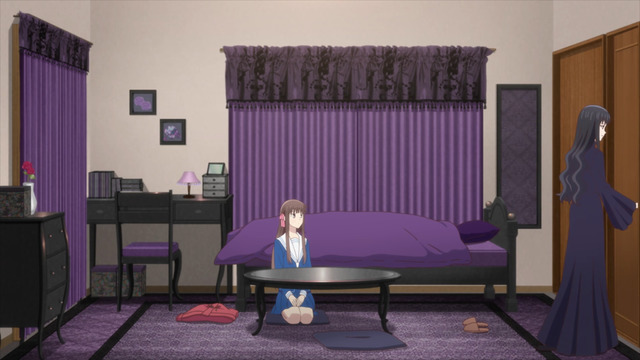
This bedroom is fantastic.
Probably everyone who has heard about Fruits Basket also knows opinions about it are almost universally favorable. Likewise, anyone thinking about getting into the series probably knows at least as much as I did concerning what it's ostensibly "about" before I watched the first anime (the 2001 one with Hocchan). One thing that surprised me as I got deeper into the plot is how monstrous the zodiac aspects are regarded in-universe. They're not set up that way at the start of the series at all.
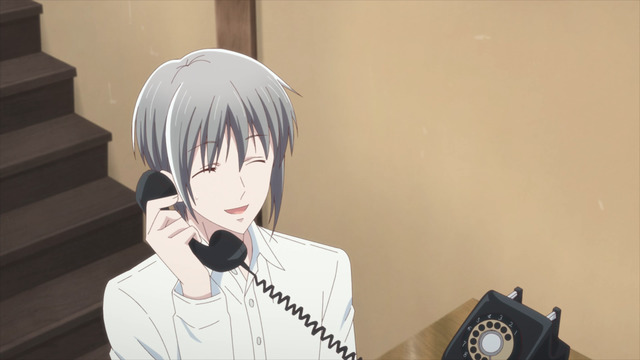
Look, a rotary phone.
I don't really want to write about Fruits Basket, since it's basically one of those shows where you can just sort of say, "Look, everyone says it's good. It is good. Just watch it." I can also see how it might not be for everyone. You have to have to have an appetite for romance and a tolerance for assholes. So many assholes. Honda Tohru is, like, the nicest, sweetest, goodest girl in the entire world and she's constantly surrounded by bitches being bitches and assholes being assholes. Back the fuck away from Honda Tohru, people.
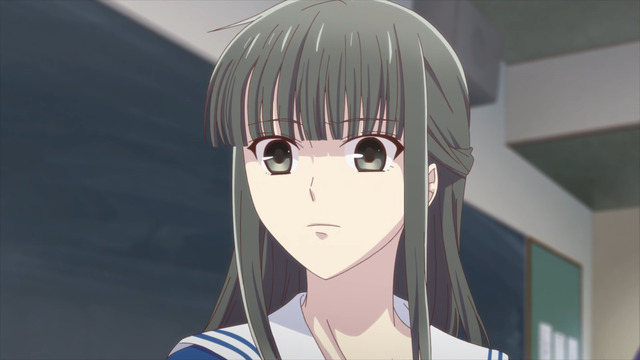
People are also assholes to Machi.
I guess viewers also have to be okay with "problematic" 'ships. I don't know if this heightened anxiety is an actual sign of the times, or if it's just localized sensitivity found on the Twitter. There are multiple age-gap pairings. There are people being mean to the people they love. Honda Tohru's mom dies. It's a whole thing. I guess the Fruits Basket 'ships are less "problematic" than the ones in Card Captor Sakura, but if these are the sorts of things that genuinely bother you, shoujo might not be for you.
Posted in Fruits Basket, RECOMMENDATIONS | Tags: 16-year-old love interests, Bedrooms, CATS, Crying, Ensemble Cast, Kugimiya Rie, Love Confessions, Love Triangle, May-December Romances, Plying Girls, Romance, Season Conclusion, Season Introduction, Sex, Shoujo, Spoilers, Spring 2019, Spring 2020, Spring 2021, Summer 2019, Summer 2020, tsundere, Twitter, Unrequited Love, Yui Horie | Permanent Link
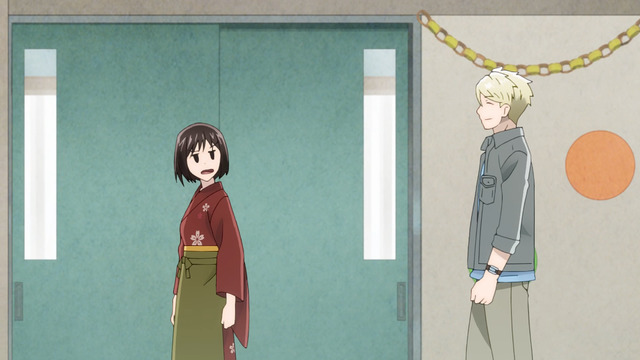
Stalker distancing.
News that the Spring 2021 anime season would feature TWO shows about adult men paired with high school girls created ripples across the Twitter, but even this mild outrage waned after viewers discovered neither show was as torrid as anticipated. Descriptions of Koi to Yobu ni wa Kimochi Warui (It's Disgusting to Call This Love, A.K.A. Koikimo) in particular concentrated on elements that ranged from misleading (characterizing its male lead as "a womanizer") to outright untruthful (e.g., calling him "sex-crazed...with a wandering eye for women"). At the risk of stereotyping too much, I suspect more attention should have been paid to the fact that the Koikimo manga is described as josei (i.e., for adult women) instead of seinen (i.e., for adult men who miss fucking teenage girls).
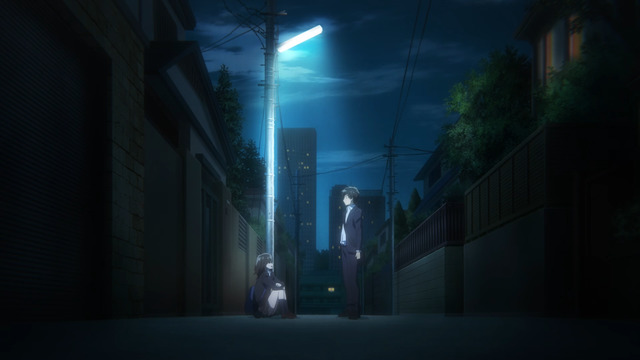
I was too bothered by Sayu's lack of luggage to make a Fate/stay night joke.
Curiously, Hige wo Soru. Soshite Joshikousei wo Hirou. (Higehiro: After Being Rejected, I Shaved and Took in a High School Runaway) seemed to attract less pre-season attention than Koikimo, but perhaps its original novels and manga adaption were already known well enough to deflect unwarranted speculation that it was going to be a smutty romp. This, despite its synopsis outright stating that its characters meet when the titular teenage girl, Sayu, offers sex in exchange for a place to stay. Instead, Higehiro is about a man, Yoshida, who insists he is not attracted to the JK crashing at his place. The series begins with Yoshida being rejected by his long-term crush (his boss at work, no less) who claims she is already seeing someone. He is so devastated that he seemingly does not even notice she was CLEARLY LYING.
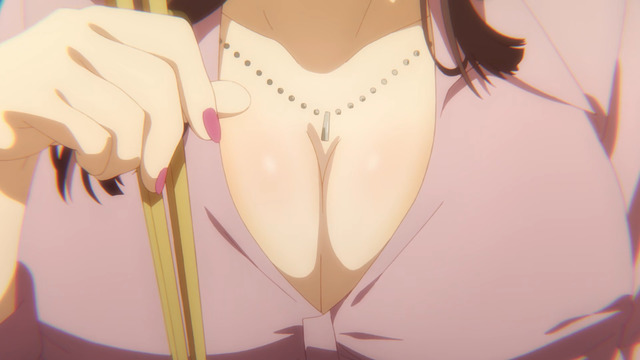
Dude, you're staring.
Higehiro also draws attention to Yoshida's insistence that he is not a "nice guy" for letting Sayu live with him without strings attached (unlike everyone else she has stayed with during her previous six months as a runaway), but rather that the other men she has known are despicable people. Yoshida also repeatedly insists he is not attracted to Sayu because he only likes women with large breasts, but then the show promptly undercuts him by immediately alerting (and repeatedly reminding) the viewer that Sayu's boobs are also comfortably big.
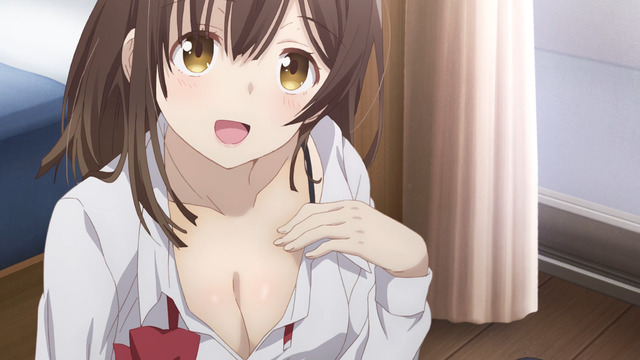
Higehiro even quantifies the comparison.
This is where I lose the ability to predict the path Higehiro will take. There is enough fan service and "male gaze" to the anime that we are obviously supposed to see Sayu as a legitimate love interest of Yoshida's, despite (or perhaps because of) his loud denials. But the show also retains the harem elements by keeping the CLEARLY LYING boss lady and deliberately slapdash co-worker near as potential romantic rivals. If I had to guess how this story ends, I would expect Yoshida's support to put Sayu on a path to success before re-uniting the two after a multi-year timeskip apart that has given Sayu time to become a self-sufficient adult with even bigger boobs than ever. Alternatively, we'll get a cop-out non-ending ending, potentially with all four of them living together for contrived reasons.
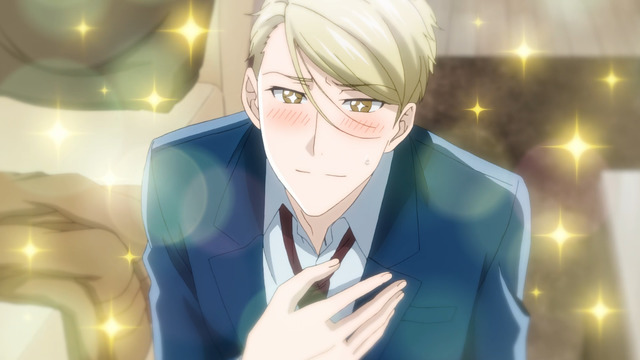
You can tell he's sincere because of the sparkles.
While Higehiro is about a man who denies being attracted to the teenage girl living with him, Koikimo is about a man openly and aggressively wooing a high school girl 10 years his junior. At this point, I think it is necessary to acknowledge the tropes that govern this story's boundaries. Ryo and Ichika meet by chance and a suspension bridge moment sparks his sudden obsession with Ichika, who is coincidentally classmates with Ryo's kid sister, Rio. Fortunately for Ryo, his sister not only approves of his infatuation with her friend, but even volunteers as his wingman to provide opportunities for him to get closer with Ichika.
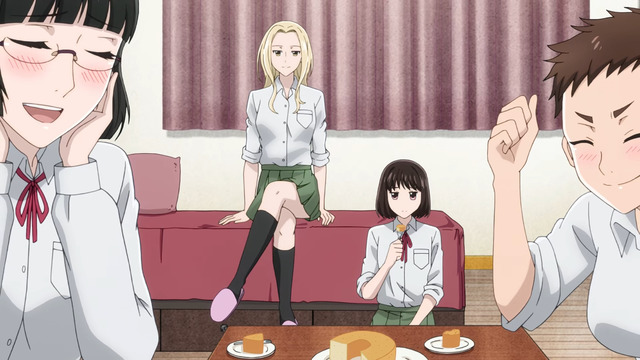
Rio's anime bed is made of concrete.
Moreover, Ichika's own mother approves of Ryo's courtship, despite Ichika's clear displeasure. It is probably worth pointing out that Ryo has apparently never had to pursue a love interest before. He is not a pick-up artist chasing after fresh prey. Instead, girls and women have thrown themselves at him his entire life (Ichika's and Rio's classmates all unanimously agree Ryo is exceptionally handsome), so this is an entirely new experience for him.
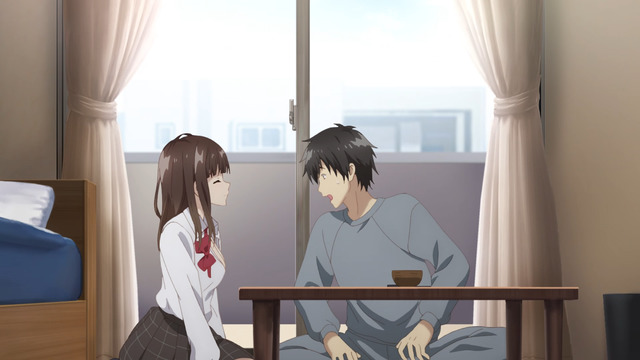
Dude, you're staring.
So what are Koikimo and Higehiro both missing? Lust. In the case of Koikimo, Ryo is clearly, genuinely smitten with Ichika, but he is arguably more drawn to her disinterest in him than he is to her physical appearance. Ichika is presented as being fairly unremarkable among her peers, and her own best friend describes her as "normal" (although at least one boy at her school has taken a liking to her). In the case of Higehiro, it takes three episodes of the show loudly signalling that Sayu is comely and sexually available before Yoshida finally admit he finds her attractive. However, his refusal to sleep with her is predicated on a critical, foundational cornerstone to the narrative's integrity, so I don't expect the story can too easily reverse this stance even if the audience comes to think he protests too much.

She is upset because she is pleased.
After four episodes of Koi to Yobu ni wa Kimochi Warui and three episodes of Hige wo Soru. Soshite Joshikousei wo Hirou., I enjoy Koikimo more than Higehiro. Neither series is especially realistic (although I could believe Higehiro, despite the melodrama, were it not for the CLEARLY LYING Christmas-cake boss lady and the co-worker who deliberately fucks up her work for Yoshida's attention), but I find Koikimo more amusing. I can't rule out the possibility that I'm simply more enamored of Ichika's seemingly endless barrage of disgusted faces than I am with Sayu's "pretty big for a high school girl" bosom, though.
Posted in Hige wo Soru. Soshite Joshikousei wo Hirou., Koi to Yobu ni wa Kimochi Warui | Tags: 16-year-old love interests, Bend Her Over a Kotatsu, Built for Sin, Christmas Cake, Compare and Contrast, Harem Comedy, Light Novels, Love Confessions, Love Triangle, Manga, May-December Romances, Plying Girls, Rape, Romance, Season Introduction, Sex, Spring 2021, tsundere, Twitter, Unrequited Love | Permanent Link
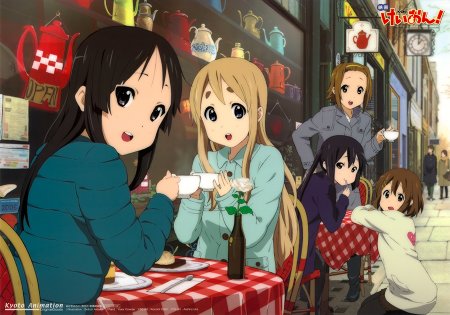
Not depicted: Bewildered patrons wondering why
people keep taking pictures of these tables.
What is Anime Tourism? Is it when anime fans make pilgrimages to real-life locales depicted in anime (see, for example, the Lucky Star Hajj), or is it when anime characters venture beyond their usual stomping grounds as tourists themselves? Maybe it's both. This installment features London, England, as depicted in the K-On! movie and in a series of Detective Conan episodes from 2011.


Welcome to London. It may appear slightly different than it does in anime.
Both K-On! and Detective Conan appear to be beneficiaries of an impressive amount of meticulous research. They accurately depict their locales while making only minor changes to avoid impeding their viewers' ability to identify certain settings. Some locations are simple yet still iconic and thus were shown virtually unchanged, such as this shot of the K-On! girls in the London Underground:
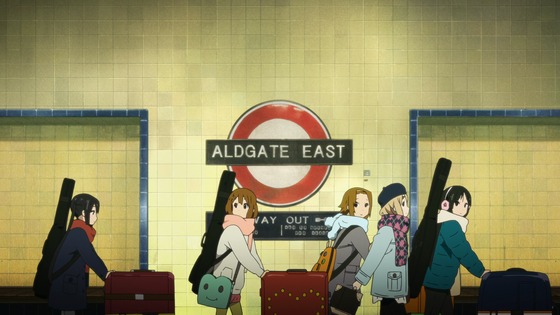

Upper: Azusa, Yui, Ritsu, Mugi, and Mio at the Aldgate East station.
Lower: Actual photo from the London Underground.
Of course, simple locations are not going to impress most viewers, nor encourage much anime tourism. Contrast this with the brief shot of the Tea Time band entering The Troubadour. A few seconds of film inspired enough visitors that the management now displays a K-On! poster in the window with a Japanese-language menu alongside its awards and positive reviews.
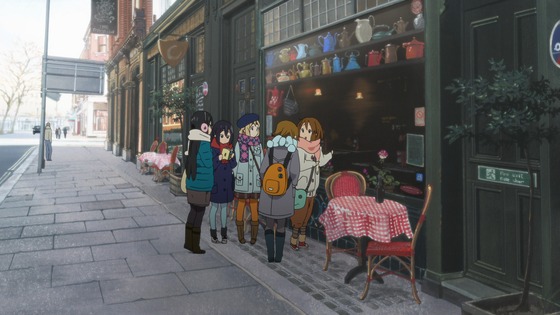
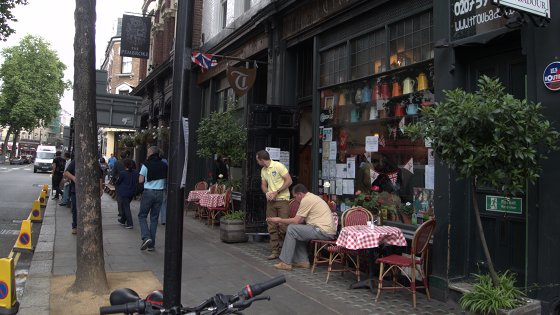
Upper: Mio, Azusa, Mugi, Ritsu, and Yui in front of The Troubadour.
Lower: Photo of the actual coffee house on Old Brompton Road.
As you can see, inconvenient trees and light poles occasionally get removed, and the scale sometimes gets changed to better fit a scene. For example, the rooms at 221B Baker Street are much more cramped than they appear in Detective Conan.
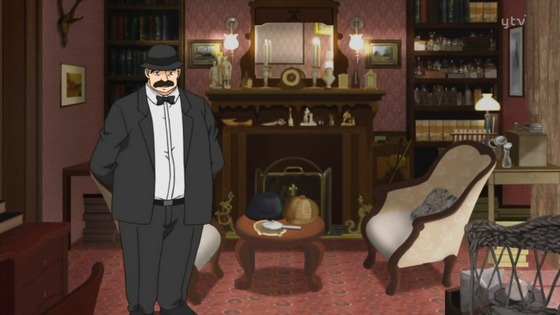

The interior of the Sherlock Holmes museum on 221B Baker Street.
Curiously, the K-On! girls also visit 221B Baker Street and pose for a picture, but appear to blow straight through the famous Abbey Road crossing without noticing. Had it been summertime, perhaps they would have been alerted by the crowds of tourists endangering their lives and making a general nuisance of themselves by playing in traffic.
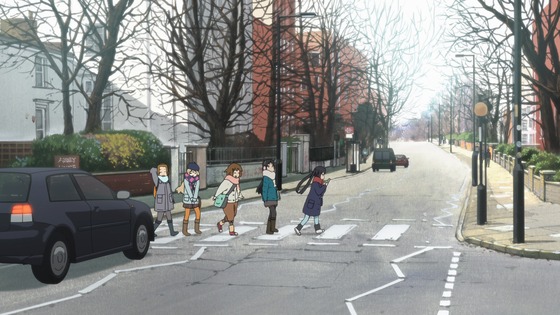
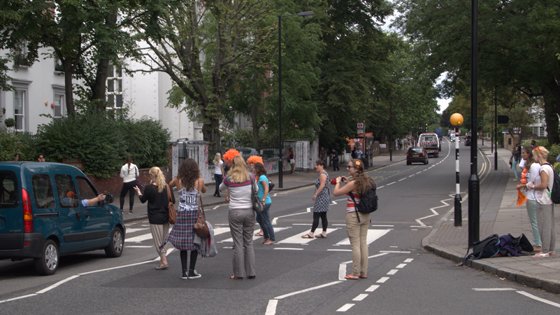
Ritsu, Mugi, Yui, Mio, and Azusa cross Abbey Road on a quiet day.
I suppose the absence of crowds is a reasonable liberty in an anime movie. Anime "filming on location" generally seems to assume a best case scenario. Although blue skies are at least plausible in Ran's case since she visited London in July, the K-On! movie's depiction of the weather over Westminster Bridge during the colder months is somewhat optimistic.
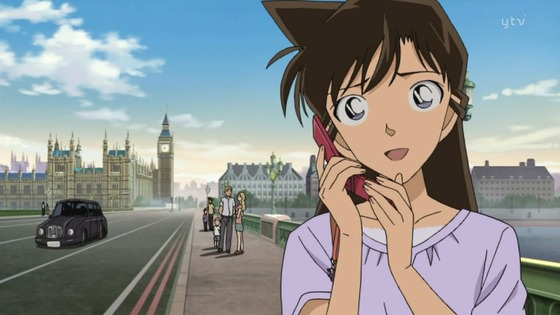
Detective Conan episode 617.
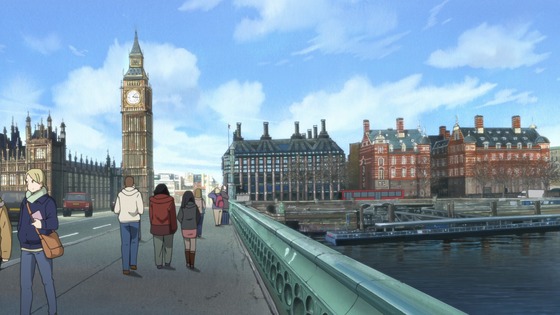
K-On! movie.

There aren't crowds in Ran's shot because it's 9PM.
So how is the K-On! movie itself? I don't actually like K-On!, having dropped the series early in its run, but K-On! is a juggernaut almost inescapable for anime fans. So despite only watching four of its 40 episodes, I still know quite a bit about the show and the characters (although my Twitter joke pretending to mistake Ui for Yui's mother flopped), making the movie quite accessible. I have to admit it's a good movie, and the K-On! characters are more agreeable now that they're better established. In many respects, the K-On! movie is a journey. The characters travel from Japan to London and then proceed to explore the city, but it's also a journey in the sense that the movie is very much about the graduating members of the light music club searching for the appropriate way to hand it over to Azusa. Neither are journeys the way Monster is a journey, but they effectively take advantage of the opportunities a feature-length project has to offer. There is a palpable sense of bewilderment and wonder as Mio, Mugi, Ritsu, Yui, and Azusa wander around London, and the movie presents numerous opportunities for the viewer to see and experience it from their points of view.
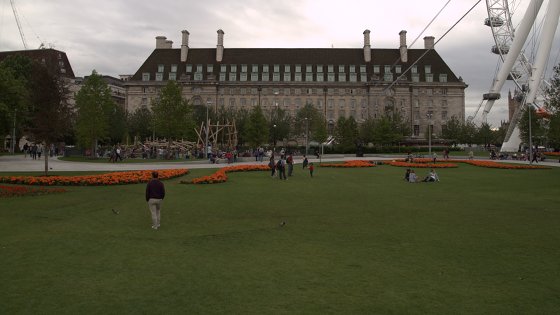

Jubilee Gardens glows with the benefit of Yui-vision.
The unusually long London arc of Detective Conan episodes in 2011 is also a journey in both these literal and metaphorical senses. With regard to the metaphorical portion, the London arc advanced a fairly significant step in the relationship between Ran and Shinichi. From the literal perspective, Conan, Kogoro, Ran, and Professor Agasa race around the city collecting clues in order to stop a mad bomber, although the transitions are not as finely executed in these moments as they are in the K-On! movie. In the Detective Conan episodes, the characters seemingly pop up at various spots the story deems appropriate. Many of these cuts lack any real consideration as to how the characters got there, and some scenes ignore minor concerns that don't actually affect the plot. For example, Ran's fortuitous encounter with Minerva Glass at the base of the Sherlock Holmes statue outside the Baker Street Underground station (around the corner and a short distance away from the entrance to the Sherlock Holmes museum) advances the story, but doesn't necessarily comport with the traveling she does that day. The K-On! movie is much better at depicting travel around the city, and ensuring the corresponding scenes are generally geographically consistent; fans could potentially recreate much of the movie by tracing Hokago Tea Time's steps.

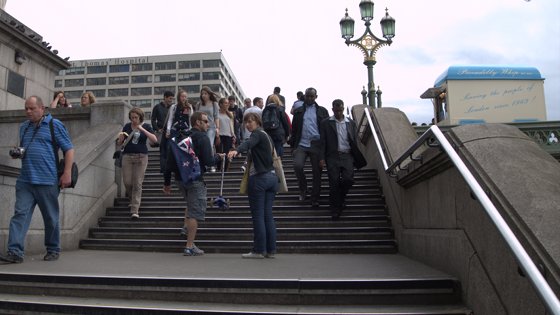
This scene needed more pickpockets.
So am I actively advocating Anime Tourism? You mean like going to various locations around the world such as Italy or France or, well, countless places in Japan strictly for the purpose of seeing the 3D versions of 2D sites? Well, no, but if you're going to be in the area anyway, load up some screenshots on a portable device for comparison's sake. It's an interesting exercise in augmented unreality.
Posted in Detective Conan, K-On!, RECOMMENDATIONS | Tags: 1000 Words, Anime Tourism, Detectives, Infantilization, Moe Blobs, Movies and OVAs, Photography, Retard Moe, Spoilers, Twitter | Permanent Link

Turns out J.C. Staff saves money by just changing the backgrounds.
One might assume Mikoto in To Aru Kagaku no Railgun would use a Yen coin to do her razzmatazz. But inspired to see how much money she was wasting with each shot, I took a closer look (larger PNG screenshot) and it does not appear to be a Japanese coin at all. If you know what this is and can actually verify your claim with some supporting evidence, fax me a picture or something, please.
Update: Mystery solved:
The coin doesn't seem to be a direct copy of real world currency, as the text on the back side seems to be written in engrish. Something to the effect of "Trap of arrest". The crown on the one face looks like the "Queen Victoria Crown", which can be found on some English and Australian coins, but none that I've seen match the coin from the show exactly.
-Richard
Ha ha. Trap of arrest.
Niku explains:
It is a game coin from an arcade. Here is a quote from Volume 1 Prologue: The Tale of the Illusion Killer Boy — The Imagine-Breaker.
"Her hand went into her skirt pocket, and took out a coin- one from an amusement parlour game."
Man, that reads like erotic fan fiction. No wonder the original novels are so popular.
@omonomono concurs:
i thought she used arcade tokens.
Posted in To Aru Kagaku no Railgun | Tags: Detectives, J.C. Staff, Twitter, Viewer Mail | Permanent Link
< Shikabane_Evirus> Anyway, I am totally going to blog about my AVANT-GARDE anime twitter, and ani-nouto is going to say it is a great or terrible idea...
Normally I would but I'm so shocked by Nanoha (or, actually, Fate) that I am thinking anime is ruined for me now, what to say about blogging and twittering.
-- Pete
Most Nanoha advocates aren't objective enough to caveat their recommendations with a qualification acknowledging that the series is rather polarizing. Many will sidestep the matter by suggesting new viewers skip directly to A's which is widely regarded as far and away the best series of the trilogy.
I disagree in so much that I feel A's has its own flaws. Also, despite some very nice fights, they don't measure up to My-Otome levels of mahou shoujo thrashings in my view. In fact, I'm tempted to claim the first series is the best of the three, merely because I prefer the dynamic having Fate as an antagonist provides.
I maintain that the most provocative aspects of the Nanoha series are the unanswered questions that everyone seems to pass over. E.g. In re Fate's Final Offer and In re the Fate of the Numbers.
Naturally, I don't think the Nanoha series is sophisticated enough to have introduced these questions deliberately—a larger flaw in my view than the pandering fan service, towards which I'm entirely ambivalent.
Posted in Mahou Shoujo Lyrical Nanoha, Mahou Shoujo Lyrical Nanoha StrikerS, Meta, Viewer Mail | Tags: Twitter | Permanent Link
< Shikabane_Evirus> Ho ho. https://twitter.com/Evirus
< albert> who is the momotato of anime twittering
< Shikabane_Evirus> I think ani-nouto quoted hinano's twitter, but I think hers is general purpose.
< Shikabane_Evirus> Anyway, I am totally going to blog about my AVANT-GARDE anime twitter, and ani-nouto is going to say it is a great or terrible idea, but regardless there will be scads of imitators afterwards and the episodic anime twittering movement will be all my fault.
< albert> unless the twitter fad blows over
< Shikabane_Evirus> I'm banking on the world's ever-diminishing attention spans.
< TheBigN> I'll be stuck keeping blogging to longer than 140 characters.
< Shikabane_Evirus> I bet nobody reads more than 140 characters of my blog entries anyway.
< Shikabane_Evirus> They probably just read the image captions.
Posted in Meta | Tags: Twitter | Permanent Link
|
|







